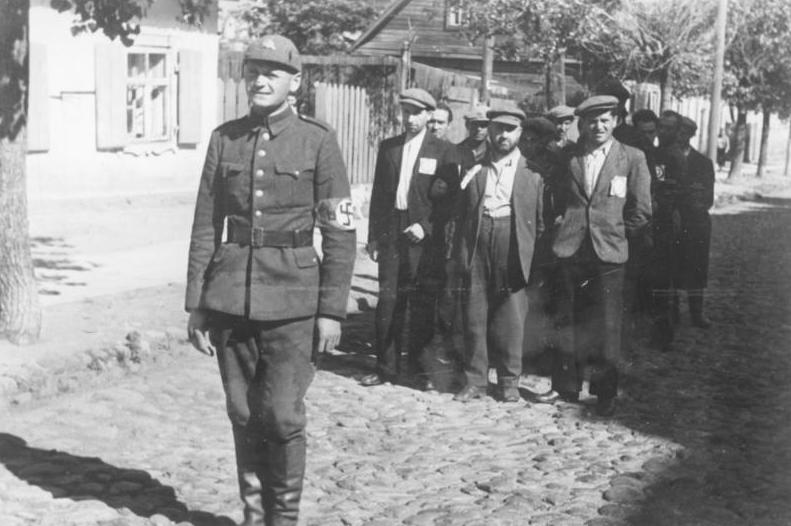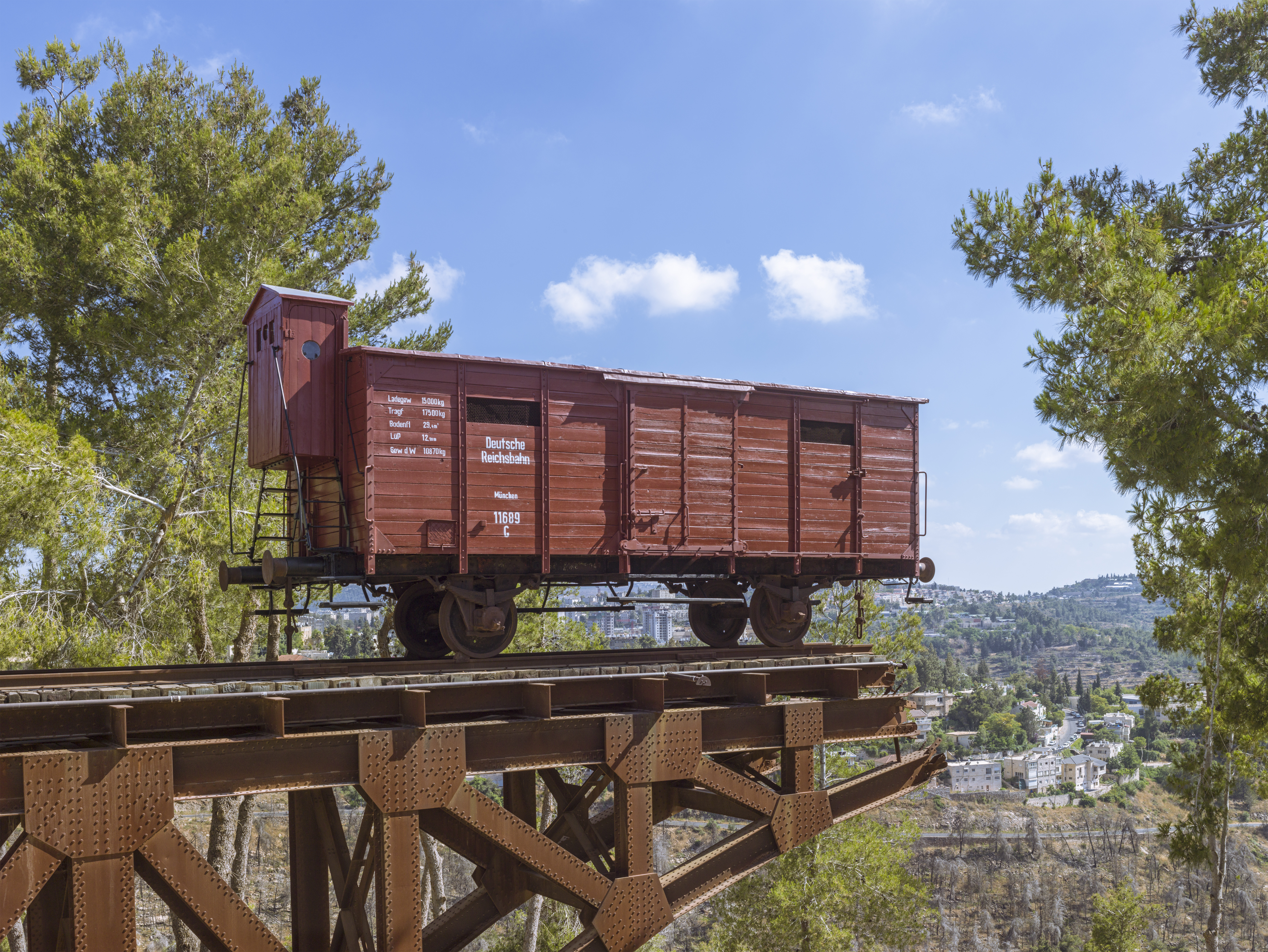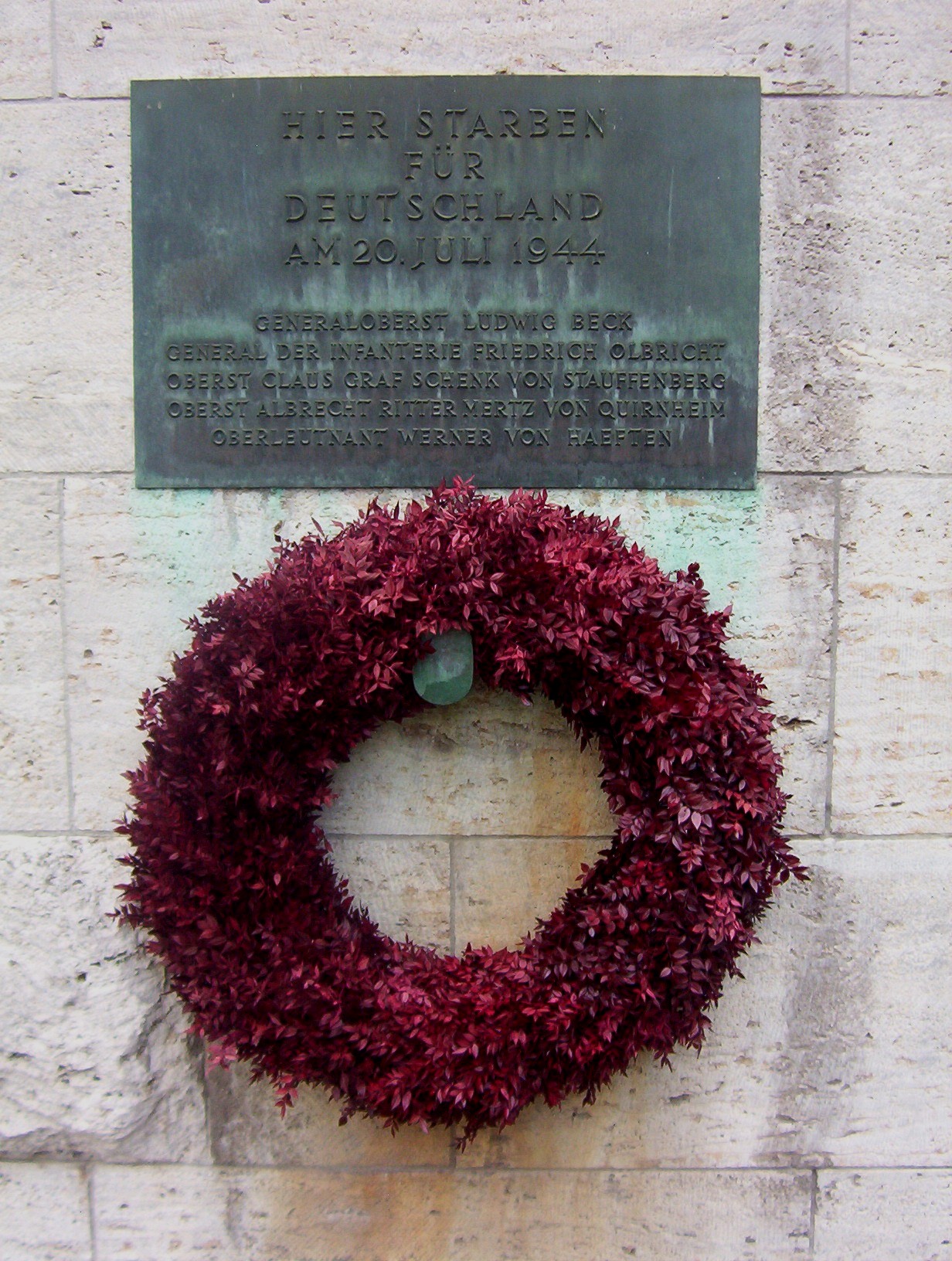|
Karl Plagge
Karl Plagge (; 10 July 1897 – 19 June 1957) was a German Army officer who rescued Jews during the Holocaust in Lithuania by issuing work permits to non-essential workers. A partially disabled veteran of World War I, Plagge studied engineering and joined the Nazi Party in 1931 in hopes of helping Germany rebuild from the economic collapse following the war. After being dismissed from the position of lecturer for being unwilling to teach racism, and his opposition to Nazi racist policies, he stopped participating in party activities in 1935 and left the party when the war broke out. During World War II, he used his position as a staff officer in the German Army to employ and protect Jews in the Vilna Ghetto. At first, Plagge employed Jews who lived inside the ghetto, but when it was due to be terminated in September 1943, he set up the HKP 562 forced labor camp, where he saved many male Jews by issuing them official work permits on the false premise that their holders' ... [...More Info...] [...Related Items...] OR: [Wikipedia] [Google] [Baidu] |
Darmstadt
Darmstadt () is a city in the States of Germany, state of Hesse in Germany, located in the southern part of the Frankfurt Rhine Main Area, Rhine-Main-Area (Frankfurt Metropolitan Region). Darmstadt has around 160,000 inhabitants, making it the fourth largest city in the state of Hesse after Frankfurt am Main, Wiesbaden, and Kassel. Darmstadt holds the official title "City of Science" (german: link=no, Wissenschaftsstadt) as it is a major centre of scientific institutions, universities, and high-technology companies. The European Organisation for the Exploitation of Meteorological Satellites (EUMETSAT) and the European Space Operations Centre (ESOC) are located in Darmstadt, as well as Gesellschaft für Schwerionenforschung, GSI Centre for Heavy Ion Research, where several chemical elements such as bohrium (1981), meitnerium (1982), hassium (1984), darmstadtium (1994), roentgenium (1994), and copernicium (1996) were discovered. The existence of the following elements were also ... [...More Info...] [...Related Items...] OR: [Wikipedia] [Google] [Baidu] |
HKP 562 Forced Labor Camp
HKP 562 was the site of a Nazi forced labor camp for Jews in Vilnius, Lithuania, during the Holocaust. Located at 47 & 49 Subačiaus Street, in apartment buildings originally built to house poor members of the Jewish community, the camp was used by the German army as a slave labor camp from September 1943 until July 1944. During that interval, the camp was officially owned and administered by the SS, but run on a day-to-day basis by a Wehrmacht engineering unit, Heereskraftfahrpark (HKP) 562 (Army Motor Vehicle Repair Park 562), stationed in Vilnius. HKP 562's commanding officer, Major Karl Plagge, was sympathetic to the plight of his Jewish workers. Plagge and some of his men made efforts to protect the Jews of the camp from the murderous intent of the SS. It was partially due to the covert resistance to the Nazi policy of genocide toward the Jews by members of the HKP 562 engineering unit that over 250 Jewish men, women and children survived the final liquidation of the camp ... [...More Info...] [...Related Items...] OR: [Wikipedia] [Google] [Baidu] |
Battle Of The Somme
The Battle of the Somme (French: Bataille de la Somme), also known as the Somme offensive, was a battle of the First World War fought by the armies of the British Empire and French Third Republic against the German Empire. It took place between 1 July and 18 November 1916 on both sides of the upper reaches of the Somme, a river in France. The battle was intended to hasten a victory for the Allies. More than three million men fought in the battle of whom one million were wounded or killed, making it one of the deadliest battles in human history. The French and British had committed themselves to an offensive on the Somme during the Chantilly Conference in December 1915. The Allies agreed upon a strategy of combined offensives against the Central Powers in 1916 by the French, Russian, British and Italian armies, with the Somme offensive as the Franco-British contribution. Initial plans called for the French army to undertake the main part of the Somme offensive, supported ... [...More Info...] [...Related Items...] OR: [Wikipedia] [Google] [Baidu] |
Western Front (World War I)
The Western Front was one of the main theatres of war during the First World War. Following the outbreak of war in August 1914, the German Army opened the Western Front by invading Luxembourg and Belgium, then gaining military control of important industrial regions in France. The German advance was halted with the Battle of the Marne. Following the Race to the Sea, both sides dug in along a meandering line of fortified trenches, stretching from the North Sea to the Swiss frontier with France, which changed little except during early 1917 and in 1918. Between 1915 and 1917 there were several offensives along this front. The attacks employed massive artillery bombardments and massed infantry advances. Entrenchments, machine gun emplacements, barbed wire and artillery repeatedly inflicted severe casualties during attacks and counter-attacks and no significant advances were made. Among the most costly of these offensives were the Battle of Verdun, in 1916, with a combined 700 ... [...More Info...] [...Related Items...] OR: [Wikipedia] [Google] [Baidu] |
Imperial German Army
The Imperial German Army (1871–1919), officially referred to as the German Army (german: Deutsches Heer), was the unified ground and air force of the German Empire. It was established in 1871 with the political unification of Germany under the leadership of Prussia, and was dissolved in 1919, after the defeat of the German Empire in World War I (1914–1918). In the Federal Republic of Germany, the term ' identifies the German Army, the land component of the '. Formation and name The states that made up the German Empire contributed their armies; within the German Confederation, formed after the Napoleonic Wars, each state was responsible for maintaining certain units to be put at the disposal of the Confederation in case of conflict. When operating together, the units were known as the Federal Army ('). The Federal Army system functioned during various conflicts of the 19th century, such as the First Schleswig War from 1848–50 but by the time of the Second Schles ... [...More Info...] [...Related Items...] OR: [Wikipedia] [Google] [Baidu] |
Classics
Classics or classical studies is the study of classical antiquity. In the Western world, classics traditionally refers to the study of Classical Greek and Roman literature and their related original languages, Ancient Greek and Latin. Classics also includes Greco-Roman philosophy, history, archaeology, anthropology, art, mythology and society as secondary subjects. In Western civilization, the study of the Greek and Roman classics was traditionally considered to be the foundation of the humanities, and has, therefore, traditionally been the cornerstone of a typical elite European education. Etymology The word ''classics'' is derived from the Latin adjective '' classicus'', meaning "belonging to the highest class of citizens." The word was originally used to describe the members of the Patricians, the highest class in ancient Rome. By the 2nd century AD the word was used in literary criticism to describe writers of the highest quality. For example, Aulus Gellius, in his ''Att ... [...More Info...] [...Related Items...] OR: [Wikipedia] [Google] [Baidu] |
Military Doctors
The term military medicine has a number of potential connotations. It may mean: *A medical specialty, specifically a branch of occupational medicine attending to the medical risks and needs (both preventive and interventional) of soldiers, sailors and other service members. This disparate arena has historically involved the prevention and treatment of infectious diseases (especially tropical diseases), and, in the 20th Century, the ergonomics and health effects of operating military-specific machines and equipment such as submarines, tanks, helicopters and airplanes. Undersea and aviation medicine can be understood as subspecialties of military medicine, or in any case originated as such. Few countries certify or recognize "military medicine" as a formal speciality or subspeciality in its own right. * The planning and practice of the surgical management of mass battlefield casualties and the logistical and administrative considerations of establishing and operating co ... [...More Info...] [...Related Items...] OR: [Wikipedia] [Google] [Baidu] |
Prussia
Prussia, , Old Prussian: ''Prūsa'' or ''Prūsija'' was a German state on the southeast coast of the Baltic Sea. It formed the German Empire under Prussian rule when it united the German states in 1871. It was ''de facto'' dissolved by an emergency decree transferring powers of the Prussian government to German Chancellor Franz von Papen in 1932 and ''de jure'' by an Allied decree in 1947. For centuries, the House of Hohenzollern ruled Prussia, expanding its size with the Prussian Army. Prussia, with its capital at Königsberg and then, when it became the Kingdom of Prussia in 1701, Berlin, decisively shaped the history of Germany. In 1871, Prussian Minister-President Otto von Bismarck united most German principalities into the German Empire under his leadership, although this was considered to be a " Lesser Germany" because Austria and Switzerland were not included. In November 1918, the monarchies were abolished and the nobility lost its political power durin ... [...More Info...] [...Related Items...] OR: [Wikipedia] [Google] [Baidu] |
Yad Vashem
Yad Vashem ( he, יָד וַשֵׁם; literally, "a memorial and a name") is Israel's official memorial to the victims of the Holocaust. It is dedicated to preserving the memory of the Jews who were murdered; honoring Jews who fought against their Nazi oppressors and Gentiles who selflessly aided Jews in need; and researching the phenomenon of the Holocaust in particular and genocide in general, with the aim of avoiding such events in the future. Established in 1953, Yad Vashem is located on the western slope of Mount Herzl, also known as the Mount of Remembrance, a height in western Jerusalem, above sea level and adjacent to the Jerusalem Forest. The memorial consists of a complex containing two types of facilities: some dedicated to the scientific study of the Holocaust and genocide in general, and memorials and museums catering to the needs of the larger public. Among the former there are a research institute with archives, a library, a publishing house, and an educational ... [...More Info...] [...Related Items...] OR: [Wikipedia] [Google] [Baidu] |
Kim Priemel
Kim Christian Priemel (born 1977) is a historian of Germany and former professor at Humboldt University Berlin; he now works for the University of Oslo The University of Oslo ( no, Universitetet i Oslo; la, Universitas Osloensis) is a public research university located in Oslo, Norway. It is the highest ranked and oldest university in Norway. It is consistently ranked among the top univers .... Works * * * References {{DEFAULTSORT:Priemel, Kim Living people Economic historians Historians of Germany 1977 births Legal historians Humboldt University of Berlin faculty University of Oslo faculty ... [...More Info...] [...Related Items...] OR: [Wikipedia] [Google] [Baidu] |
German Resistance To Nazism
Many individuals and groups in Germany that were opposed to the Nazi regime engaged in active resistance, including attempts to remove Adolf Hitler from power by assassination or by overthrowing his established regime. German resistance was not recognized as a collective united resistance movement during the height of Nazi Germany, unlike the more coordinated efforts in other countries, such as Italy, Denmark, the Soviet Union, Poland, Greece, Yugoslavia, France, the Netherlands, Czechoslovakia and Norway. The German resistance consisted of small, isolated groups that were unable to mobilize widespread political opposition. Individual attacks on Nazi authority, sabotage, and the successful disclosure of information regarding Nazi armaments factories to the Allies, as by the Austrian resistance group led by Heinrich Maier prevailed alongside this as well. One strategy was to persuade leaders of the Wehrmacht to stage a coup against the regime; the 1944 assassination attemp ... [...More Info...] [...Related Items...] OR: [Wikipedia] [Google] [Baidu] |
Fellow Traveler
The term ''fellow traveller'' (also ''fellow traveler'') identifies a person who is intellectually sympathetic to the ideology of a political organization, and who co-operates in the organization's politics, without being a formal member of that organization.Bullock, Alan; Trombley, Stephen, Editors (1999), ''The New Fontana Dictionary of Modern Thought'' Third Edition, p. 313. In the early history of the Soviet Union, the Bolshevik revolutionary and Soviet statesman Anatoly Lunacharsky coined the term ''poputchik'' ('one who travels the same path') and later it was popularized by Leon Trotsky to identify the vacillating intellectual supporters of the Bolshevik government. It was the political characterisation of the Russian '' intelligentsiya'' (writers, academics, and artists) who were philosophically sympathetic to the political, social, and economic goals of the Russian Revolution of 1917, but who did not join the Communist Party of the Soviet Union. The usage of the term ''pop ... [...More Info...] [...Related Items...] OR: [Wikipedia] [Google] [Baidu] |





